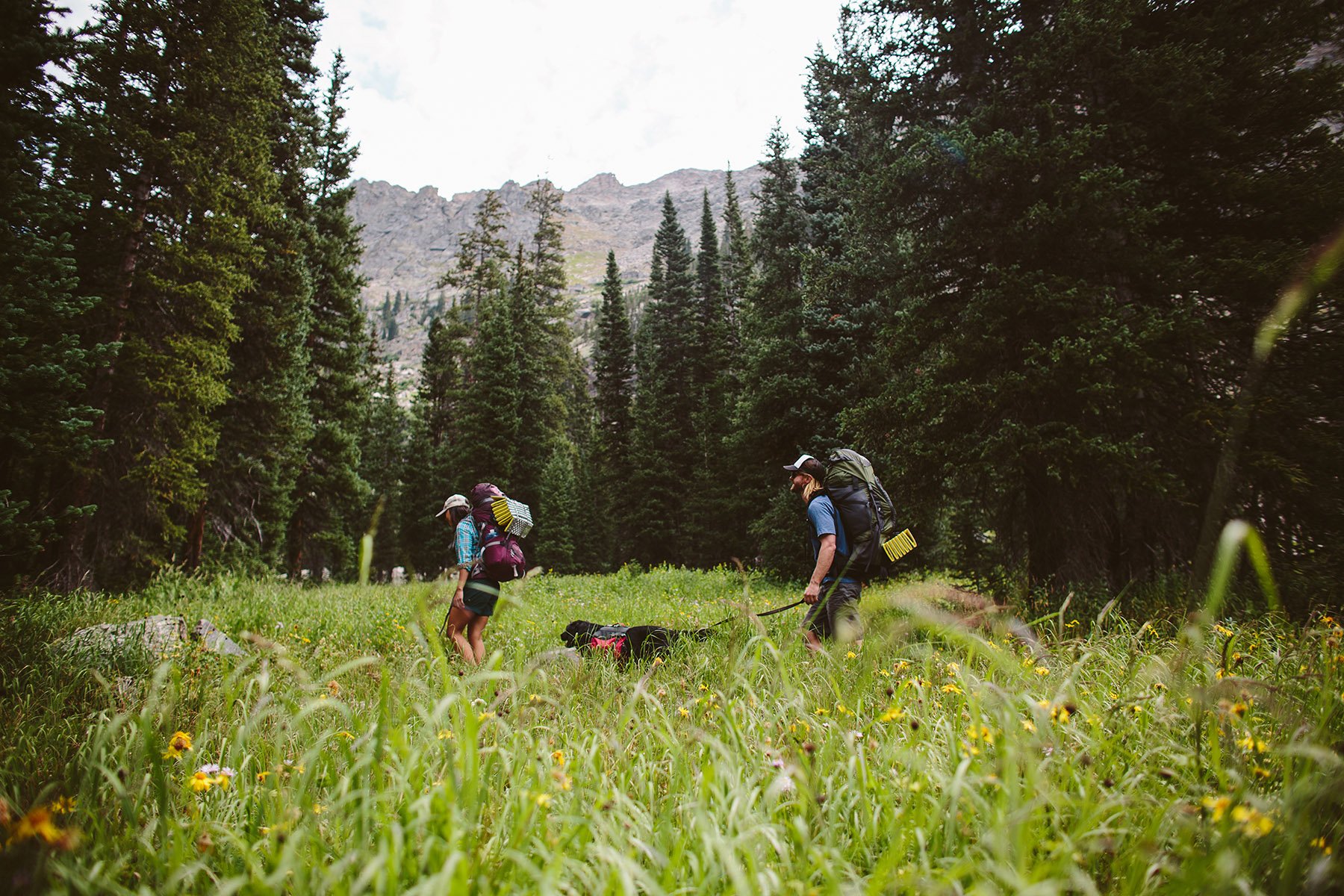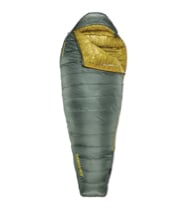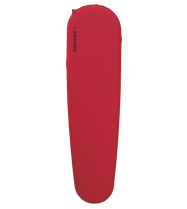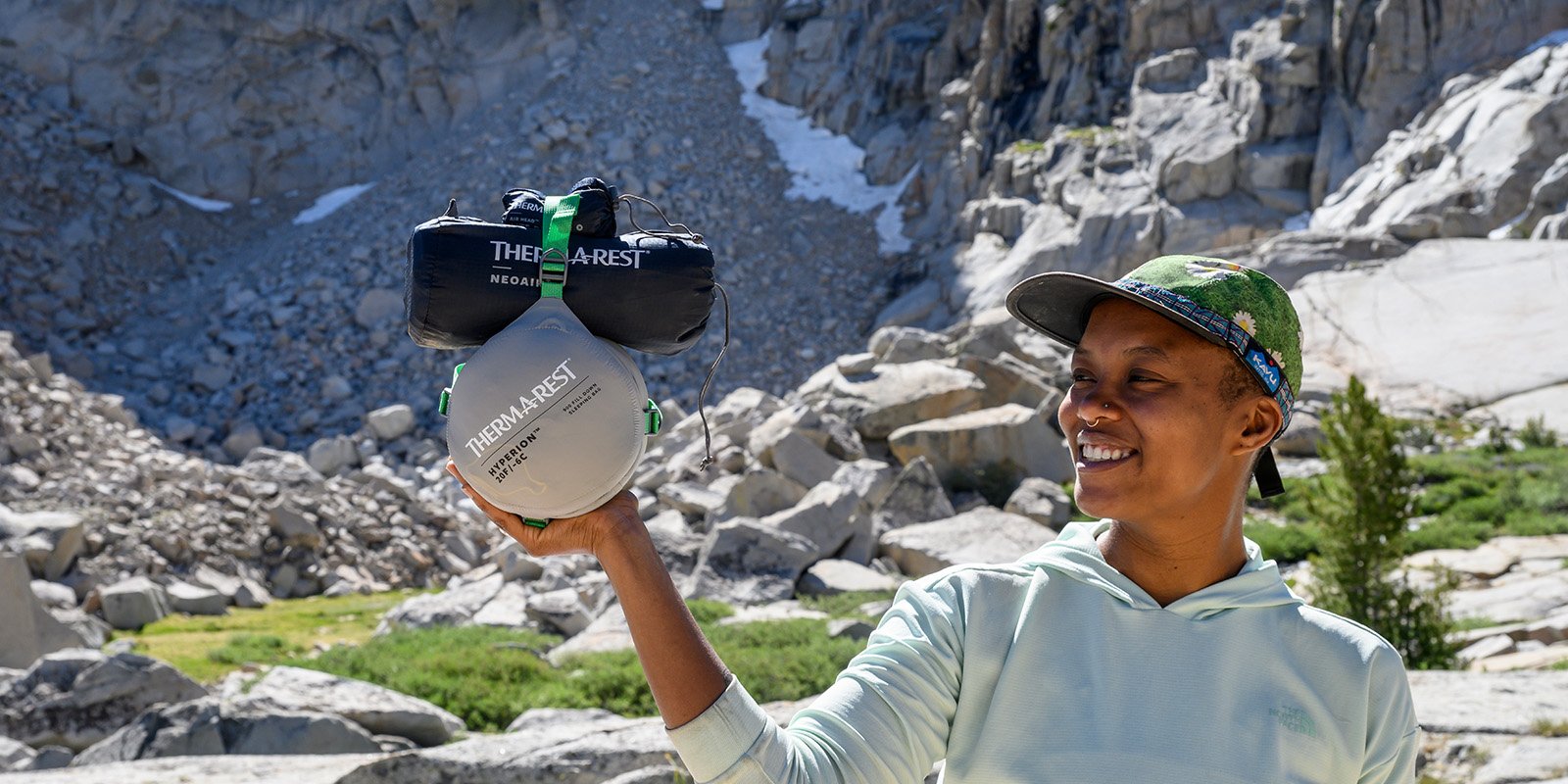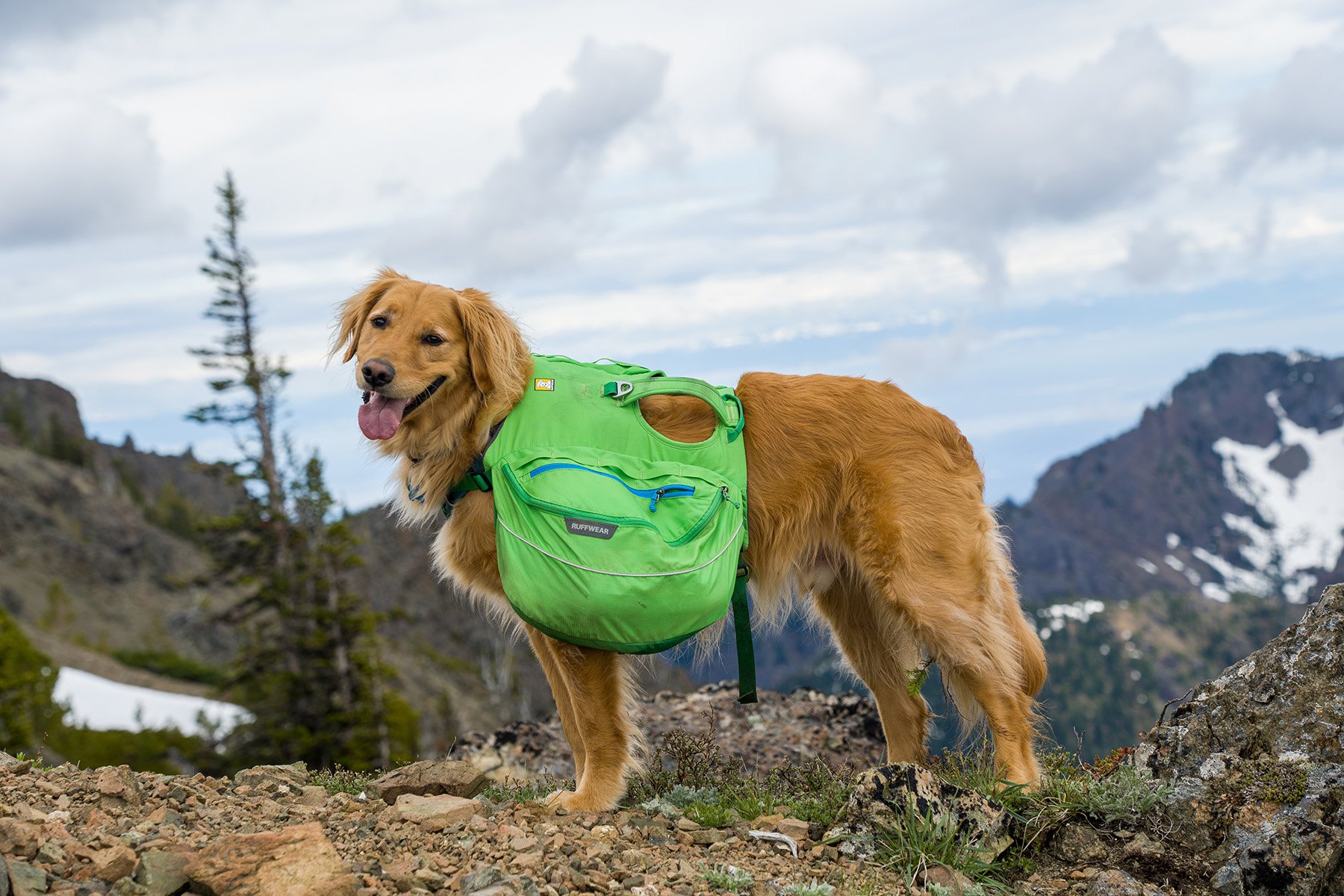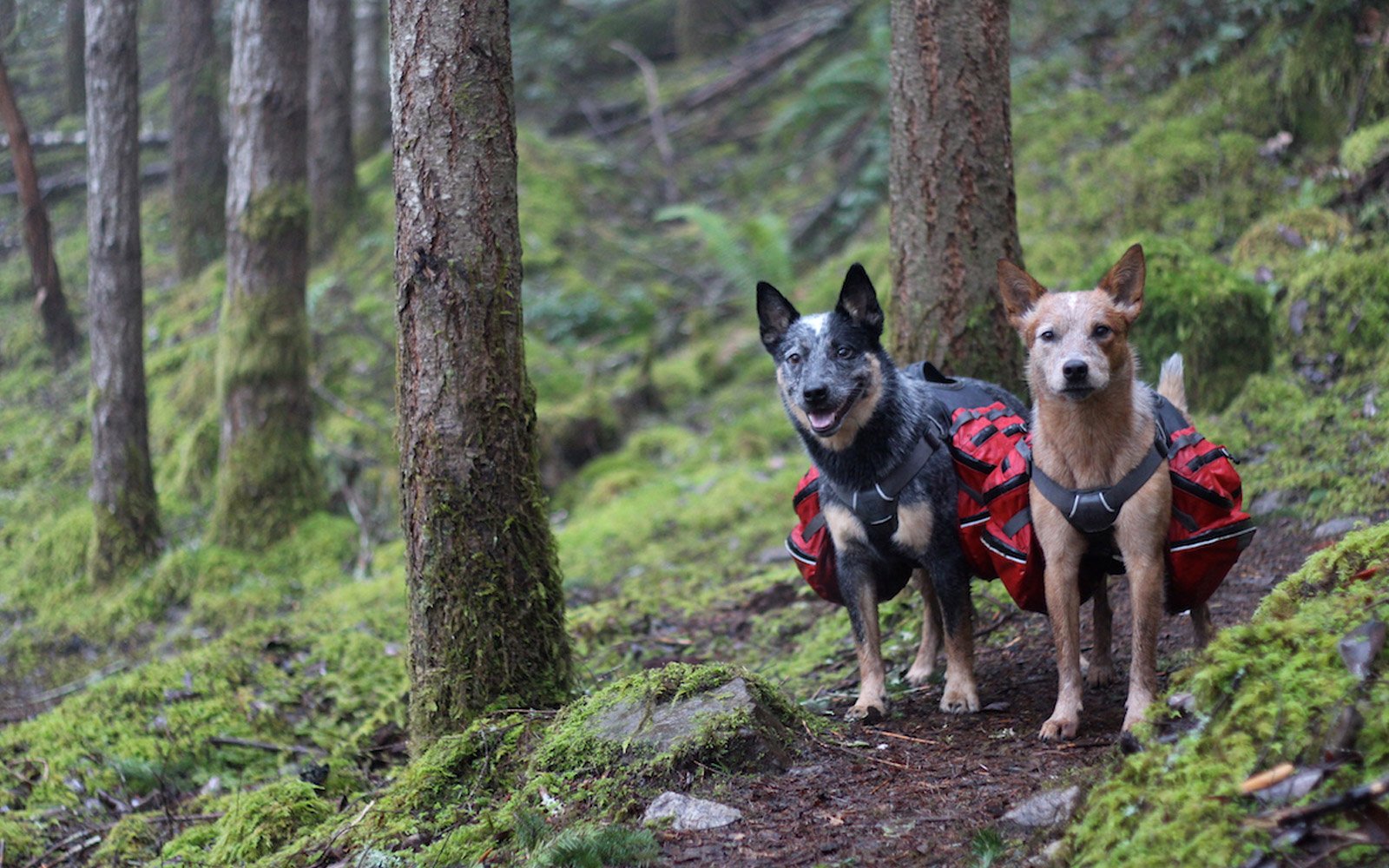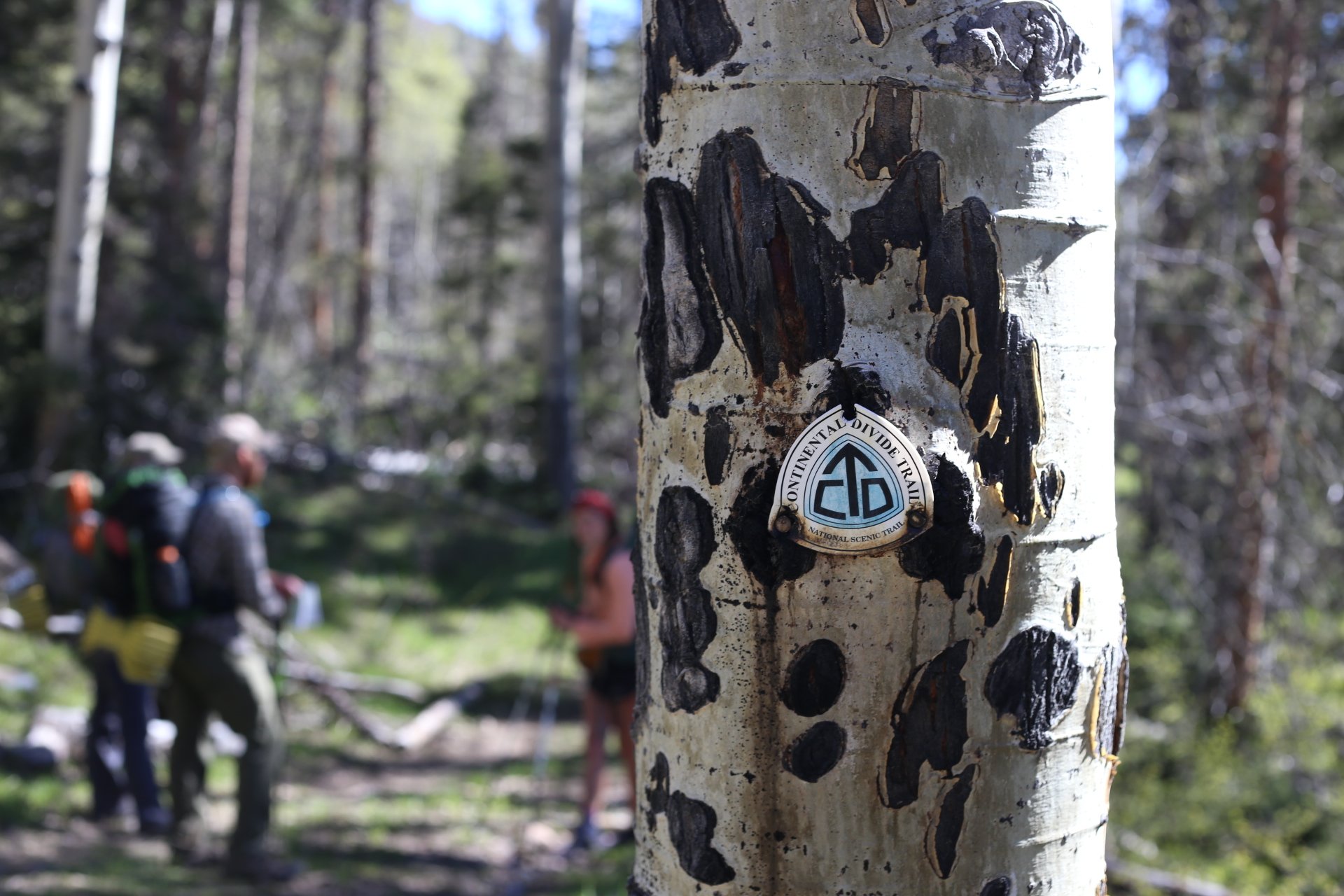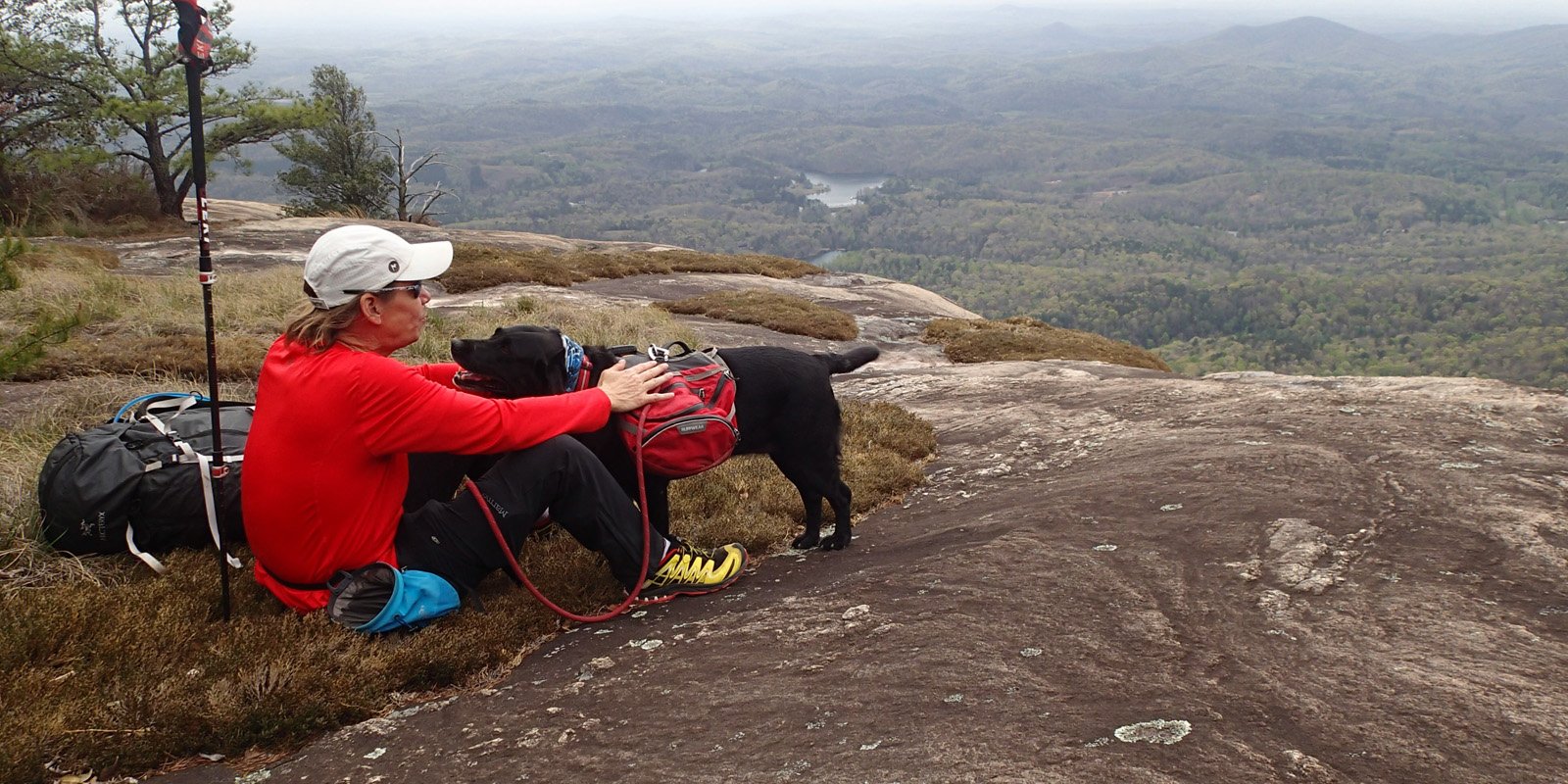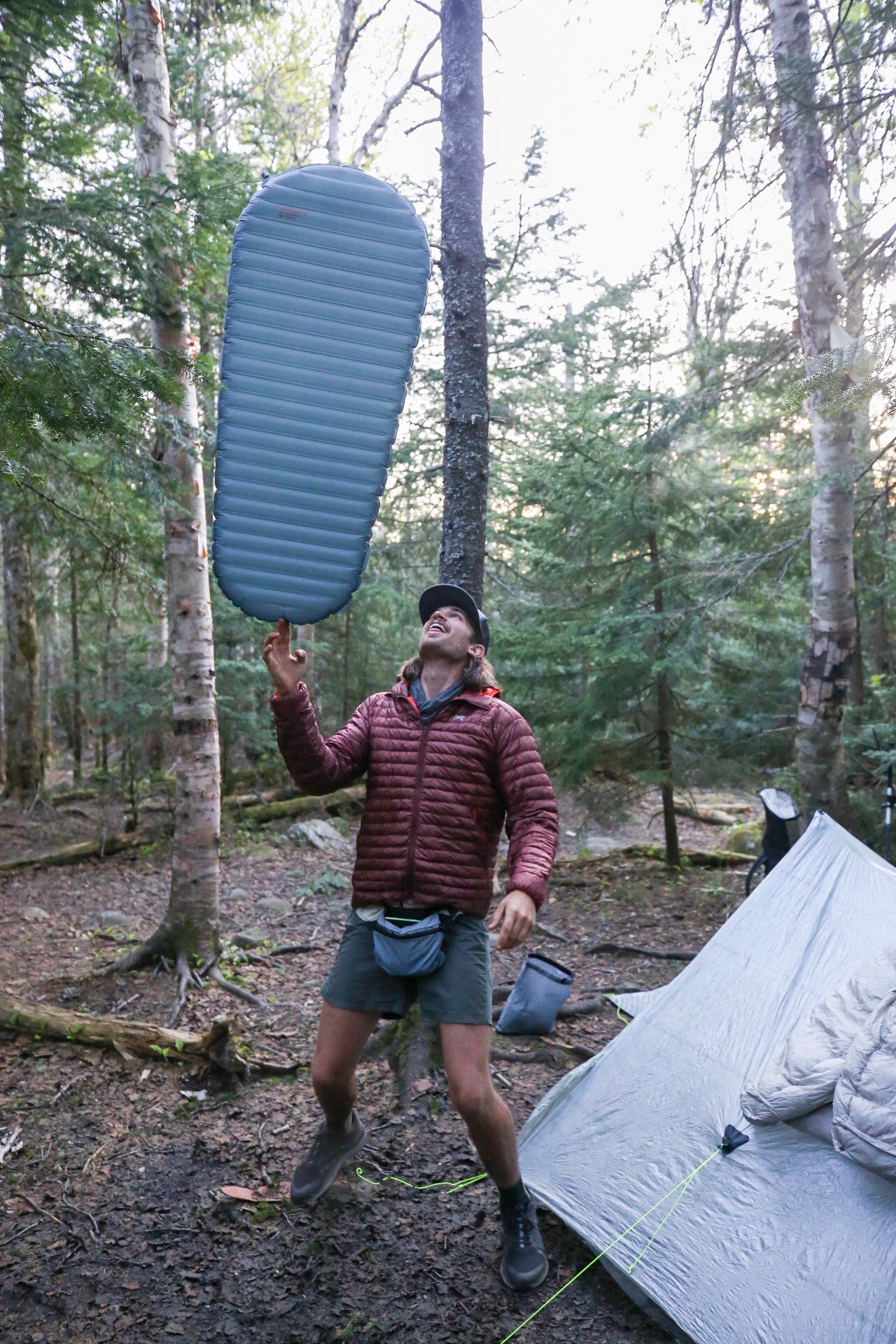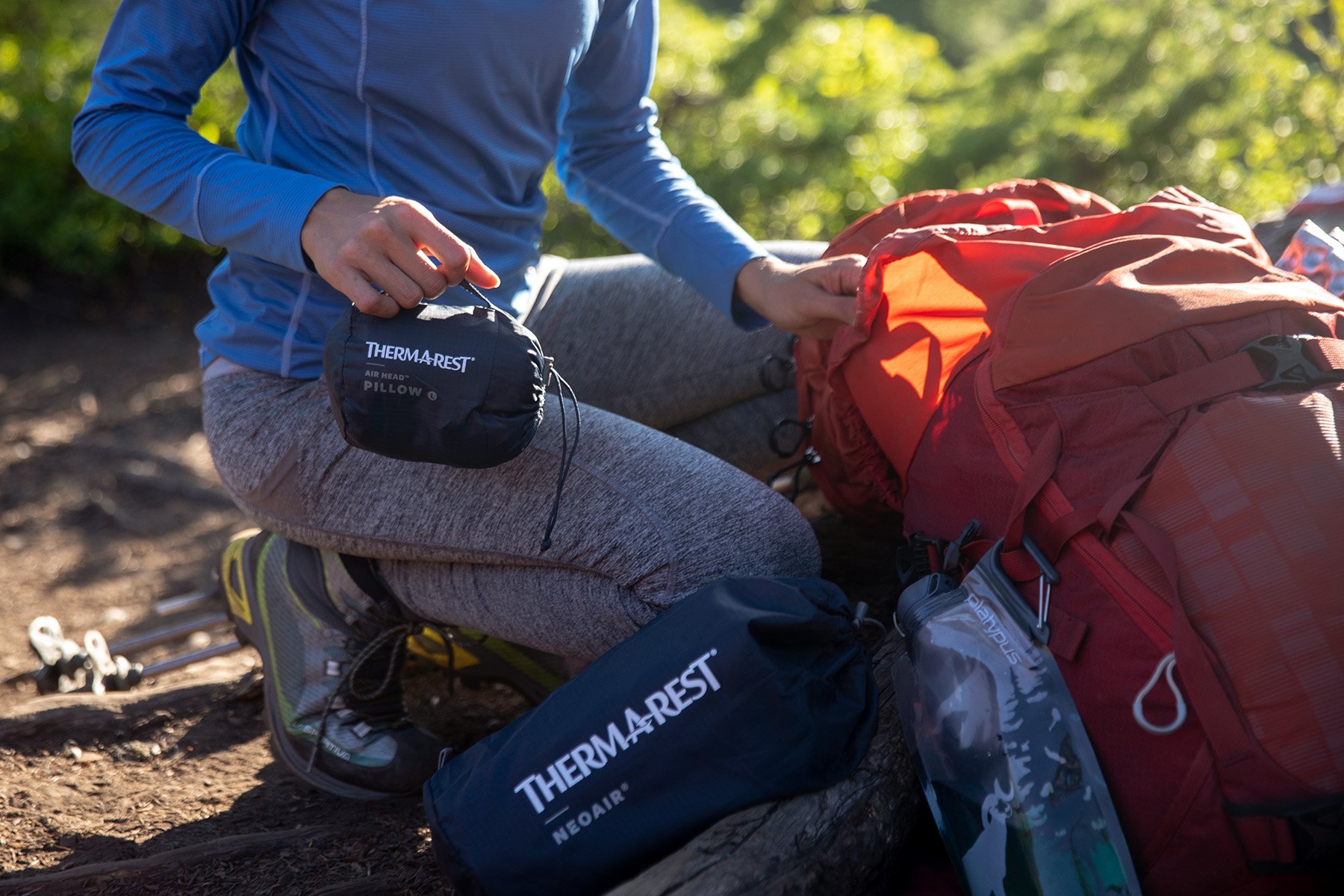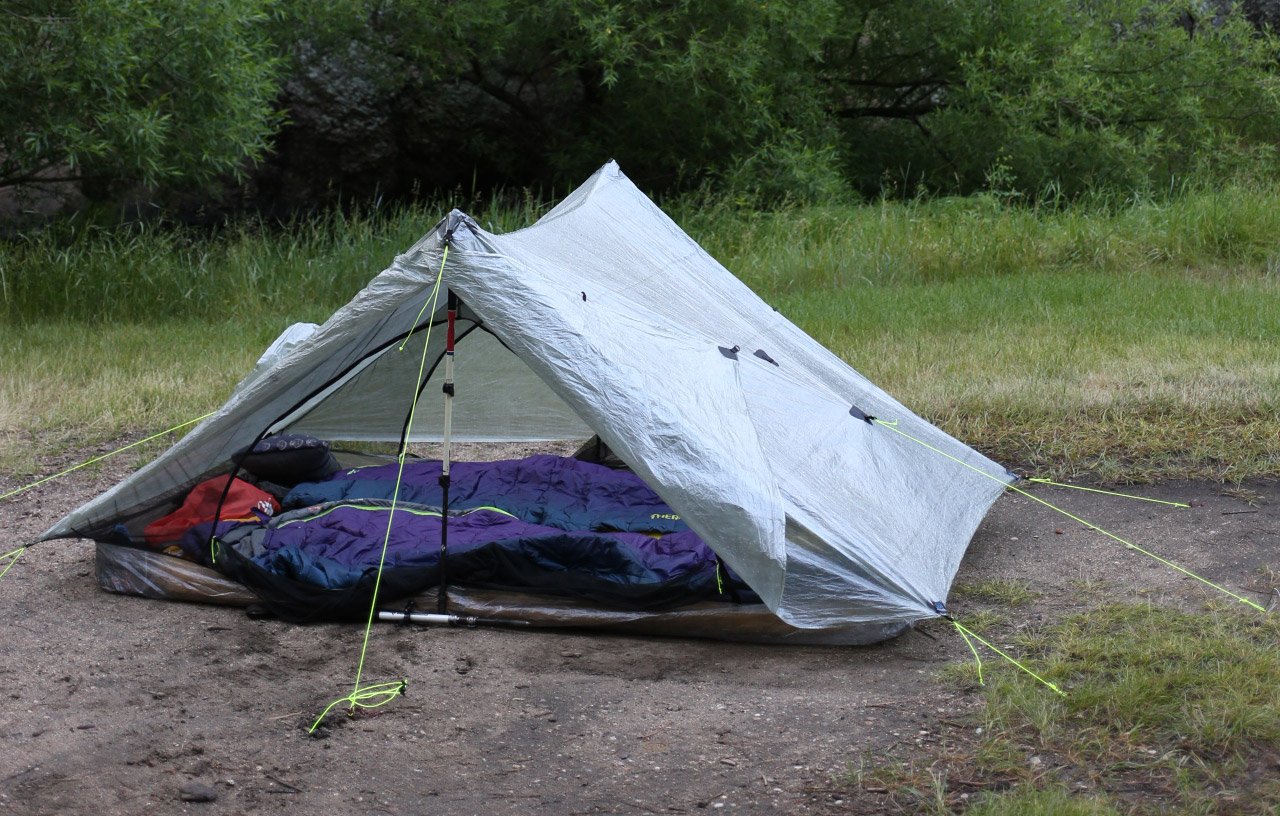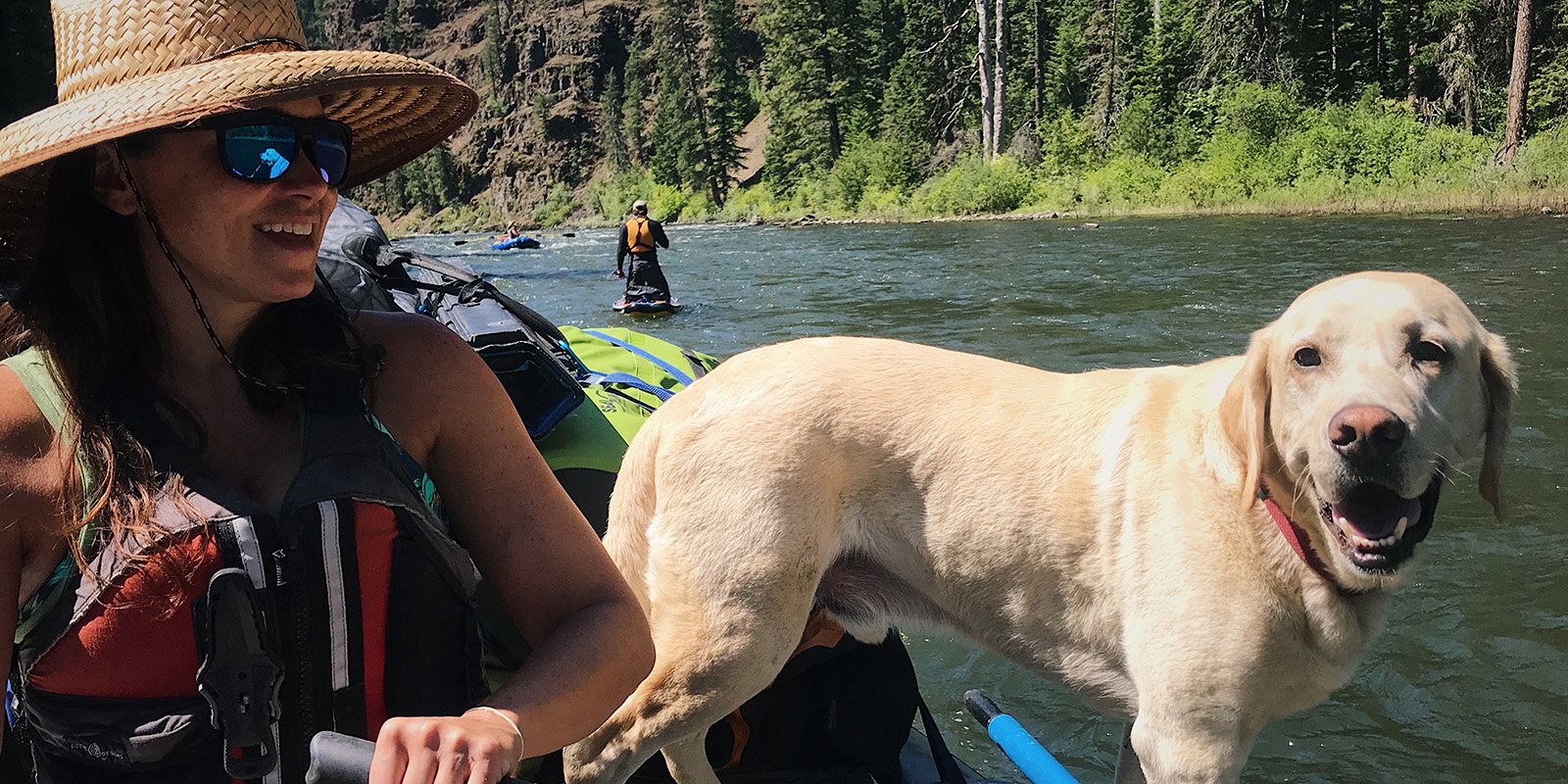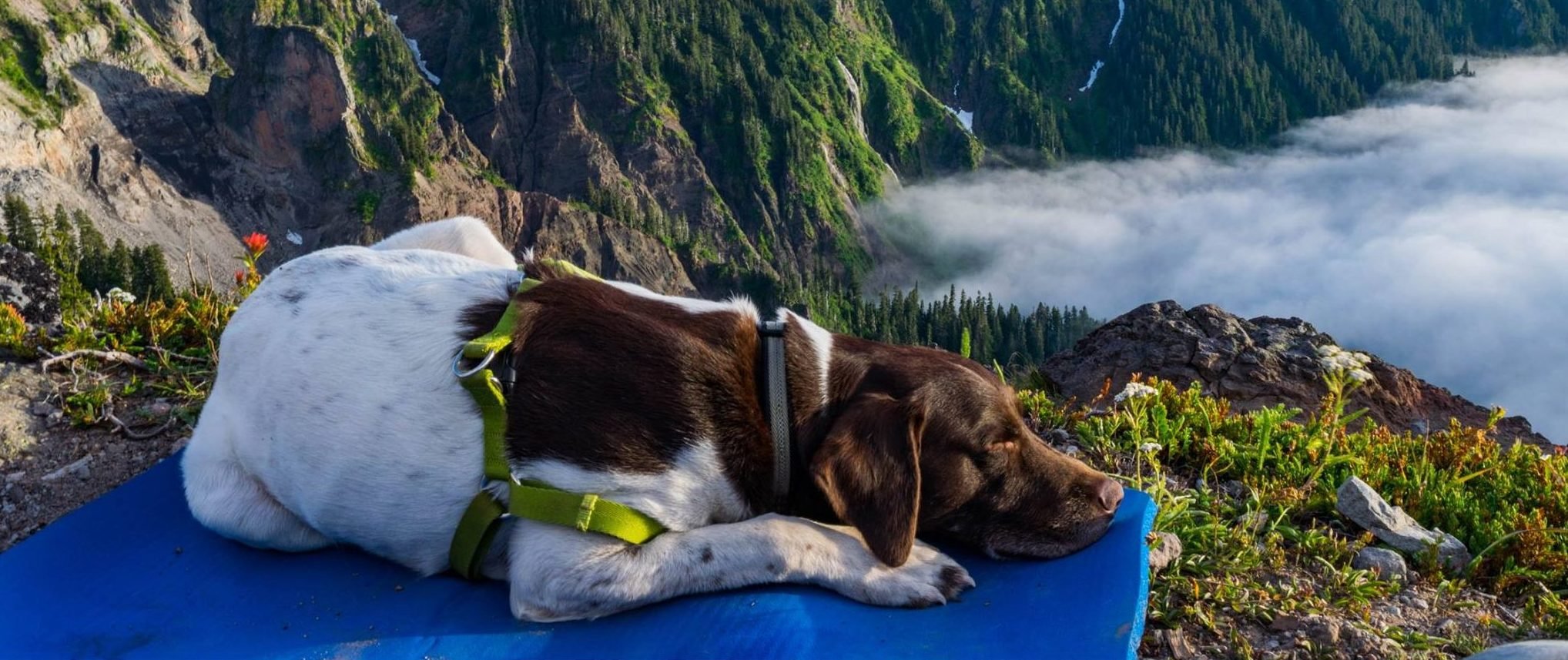My guide-dog, Tennille and I have trekked more than 6,000 miles together and have completed five thru-hikes throughout the United States. We’ve found that long-distance hiking is a very enjoyable experience if done correctly. But before you head out, there are some things to consider. Here are some tips I’ve found helpful when taking my four-legged friend on a hiking adventure.
9 Tips for a Long-Distance Hike with Your Dog
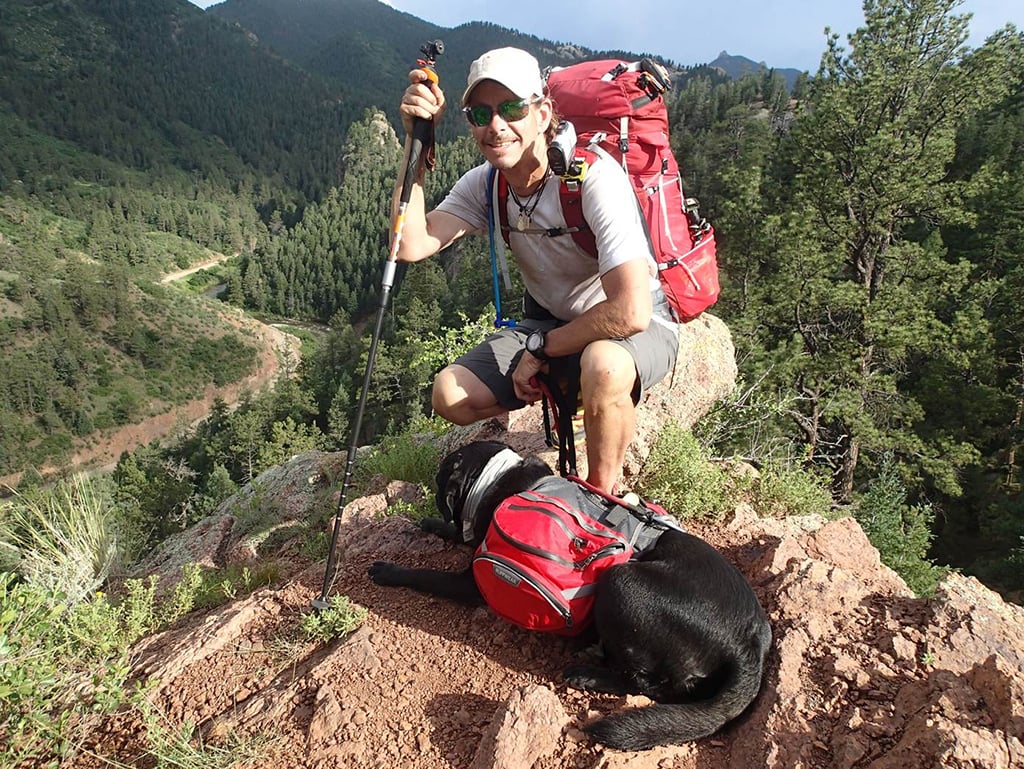 Photo by Trevor Thomas
Photo by Trevor Thomas1. Do your research
Check with the trail association or with the forest service to find out if dogs are allowed on the trail you are considering. There are many trails, and sections of the longer trails that do not allow dogs. Research the topography to make sure that your dog can handle the terrain. Another thing to consider is weather. Conditions that are well suited for hikers, are not necessarily good for your dog. Extremely hot or humid weather can be dangerous and life threatening for your pet. Remember that your dog does not sweat, they can only pant to cool themselves and tend to overheat easily, which can occur very quickly. You may want to consider hiking a trail that is notoriously hot during the Winter hiking season, which will be safer for your dog.
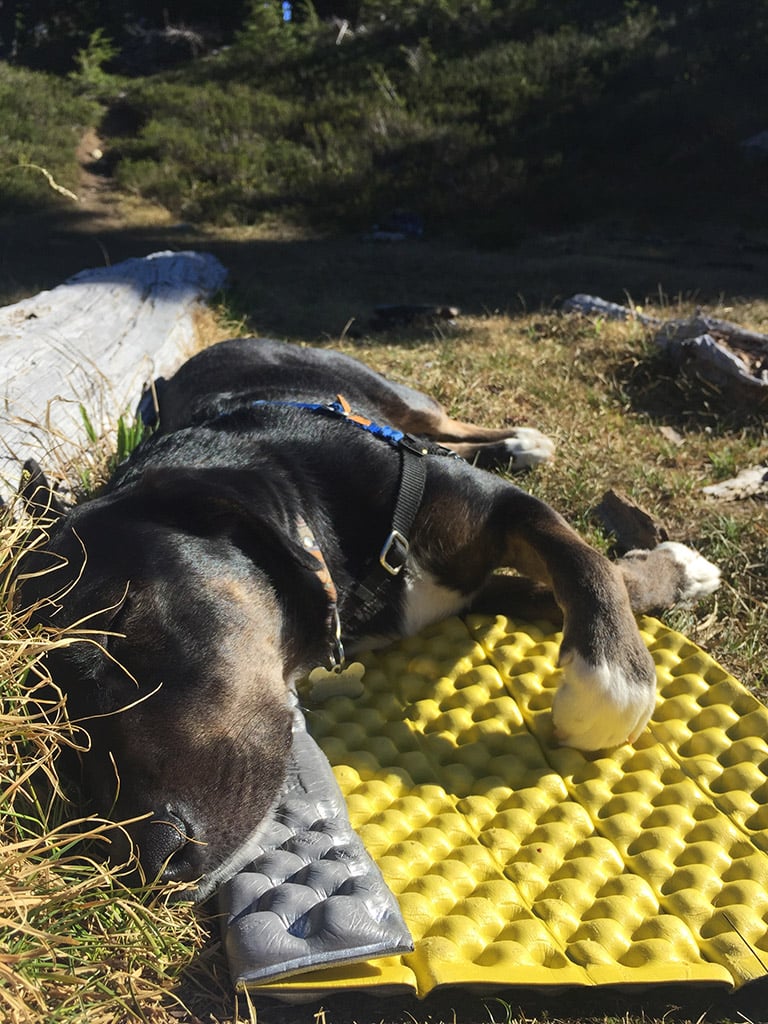 Photo by Angie Tomson
Photo by Angie Tomson2. Pack gear for your dog too
Most hikers spend countless hours deliberating over which gear to take with them and give little to no thought to what gear their dog will need for the trek. This should not be the case. Your dog will need gear for its safety, health and comfort. Remember, the healthier and happier your dog is, the more enjoyable your trek will be. Here is a list of dog gear that you should consider.
Starting with the essentials your dog will need:
- backpack or harness
- collar with all vaccine and identification tags
- leash (not one of the extendable leashes)
- collapsible bowl
- booties
- rain jacket
- sleeping pad or bed
- camp towel
- their favorite chew toy
 Tenille uses a custom-sized Therm-a-Rest Sleeping Bag and ProLite Mattress. | Photo by Trevor Thomas
Tenille uses a custom-sized Therm-a-Rest Sleeping Bag and ProLite Mattress. | Photo by Trevor ThomasYou may also want to consider a sleeping bag, getting your dog fitted with a microchip identification implant and an emergency personal rescue beacon such as a SPOT device. All of this might sound like a lot of stuff to carry, but, in my opinion, it is necessary.
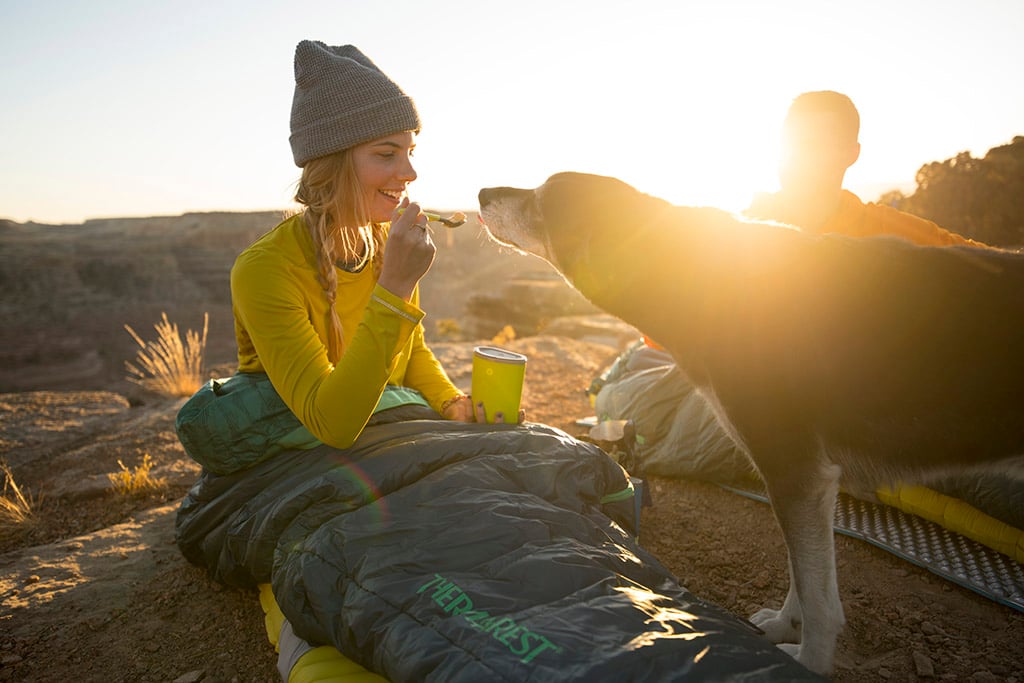 Photo by Sammy Spence
Photo by Sammy Spence3. Food … don’t forget the food
Food for your dog should be your next consideration. Buy them the best, high-quality food that you can afford. Natural, high calorie food will give your dog the energy he or she will need for the demands of hiking. There are many companies that produce wilderness blends and formulas for highly active dogs. Some are natural dehydrated or freeze dried food. Both are great options to consider for saving weight, but can be expensive. Monitor your dog’s caloric intake. Do not simply throw some kibble in their bowl at the beginning and end of the day or feed them whatever food you do not eat. Having a treat bag is a great way for your dog to snack throughout the day and is a way to reward them for good behavior. Remember that dogs can gain and lose weight at an alarming rate. Like people, dogs need more calories/food the longer they are on the trail. Most dogs will require between two to three times the amount of food they would normally consume while at home. Electrolyte replacement powders are available, and are great when hiking in arid environments. For those of you who have dogs that do not hydrate well, it is a great way to encourage them to drink water because most dogs really like the taste.
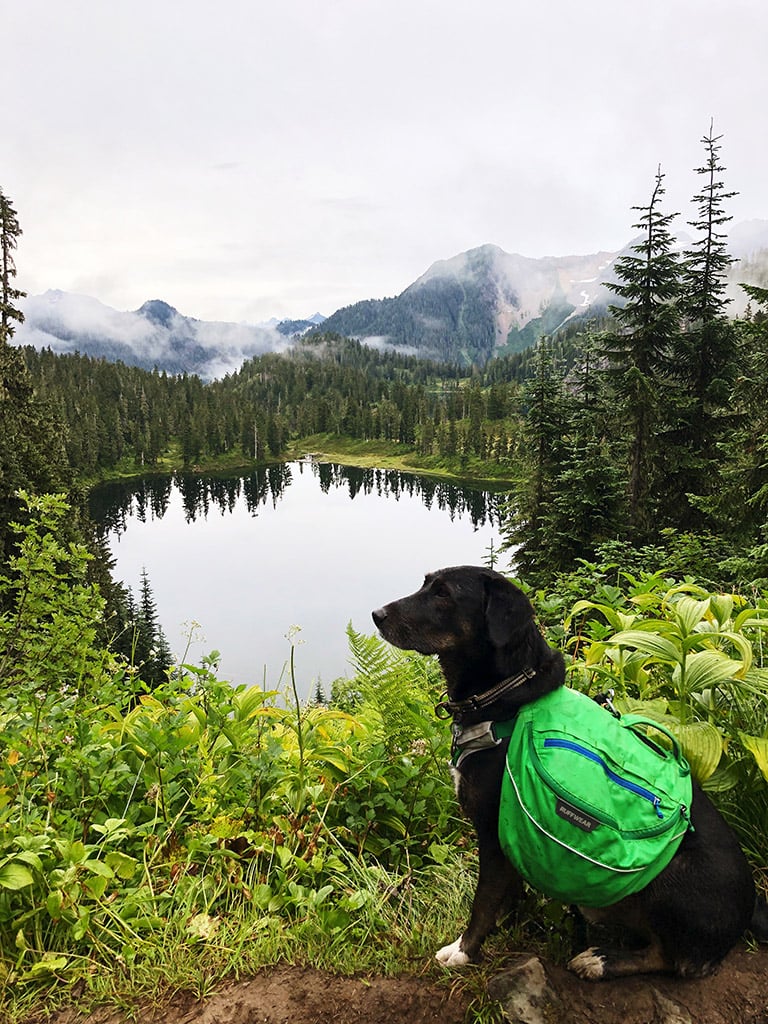 Photo by Angie Tomson
Photo by Angie Tomson4. Upgrade your first aid kit
Essentials to add are hydrogen peroxide to encourage vomiting when they eat something that is dangerous to them. There are many plants in the backcountry that can make your dog sick or kill them if eaten. Rimadyl (vitamin I for dogs) is also good to have. Like people, your dog can experience injuries during a trek. Flagyl for dogs is the same as it is for people, other than the dosage. Dogs can and do get Giardia and Cryptosporidium, so it is good to be prepared for it. Most other things in the standard hiker first aid kit for wounds can be used on dogs.
By this point, you may be asking yourself, how is my dog going to carry all of this stuff? The answer is, the dog is not … you are. Most experts agree that a dog can carry 10% to 15% of their body weight in their pack. The weight of food by itself far exceeds this, so you will have to carry extra weight and take this into consideration when planning resupply points. Most of us who hike with dogs have fewer days between resupply points.
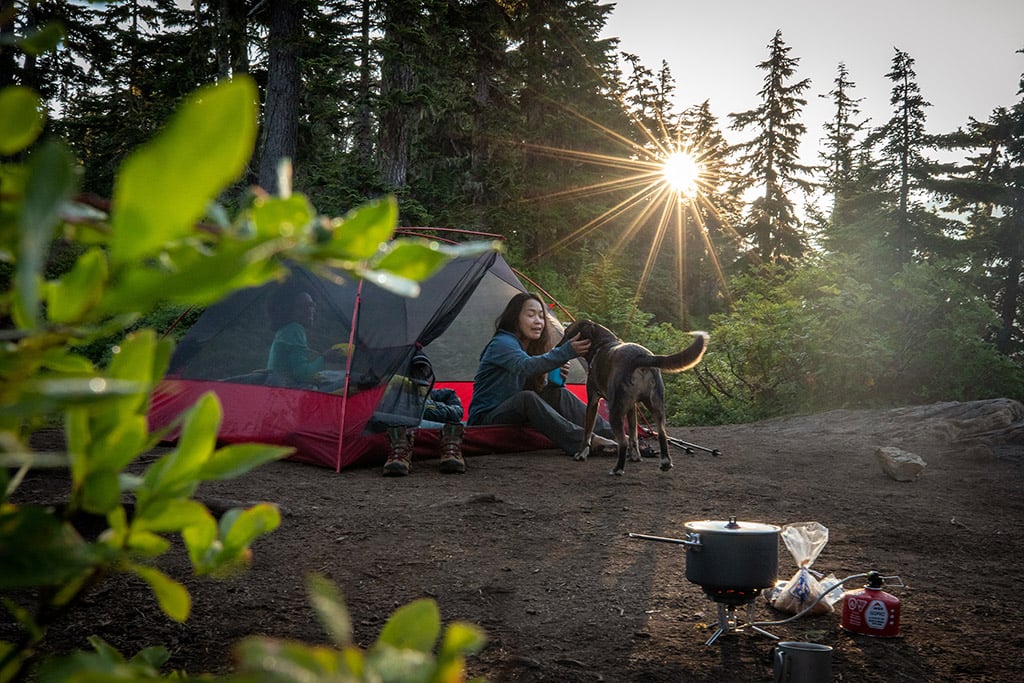 Photo by AJ Wells
Photo by AJ Wells5. Be observant
Your dog can’t tell you what is wrong and in many cases will not show weakness. It is your job and obligation to examine them daily to ensure they are healthy. Spending a few minutes each day examining their pads, checking for ticks and range of motion in their joints will pay off in the long run and is a great way to bond with your dog.
6. Train with your dog
Most dogs would prefer to sleep 17 hours per day and are not in shape to accompany you on the trail. Start walking them every day and make sure that they are conditioned to do the kind of miles you want to do on the trail. Take them with you on your shakedown hikes. Look at these as a short trial run before heading out. You will really get to know what it will be like before you commit to a long trek with them. You will also find out pretty quickly if you want the added responsibility of having your dog with you. Most of all, you will find out if your dog likes to hike. Not all of them want to, and not all dogs are suited for hiking. The rewards are many by taking your dog on the trail, but there are tradeoffs you will have to make to accommodate their needs.
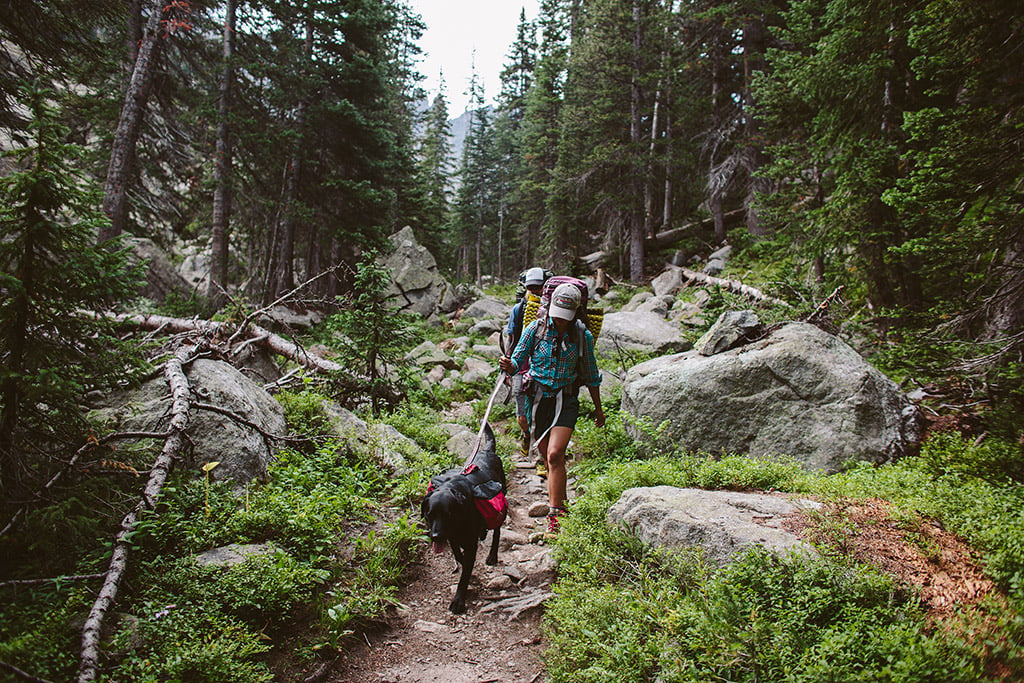 Photo by Ali Vagnini
Photo by Ali Vagnini7. Follow trail etiquette
Once you have made it to the trailhead, there are some rules and etiquette you need to observe when hiking with a dog. First, keep your dog on a leash. It is a safety factor for your dog, for you, for others, and it is the law. Also, make sure that your dog is behaving and is obedient. Not everyone likes dogs, so be considerate of other hikers. Having a disobedient dog on the trail will make your hike miserable and won’t make you many friends.
Camp etiquette is important when traveling with your dog. Your dog needs shelter and a place to call home each night. Even if there are shelters on the trail you have chosen to hike, get a tent for you and your dog to sleep in. Most people do not want a dog running around in the shelters or in camp. Your tent is a safe place for your dog to relax in the evening, and having them sleep inside the tent with you will keep them out of trouble at night while you are sleeping. Remember that your dog is a pack animal and wants to be with you. They will be much happier in your tent than anywhere else.
Lodging can be another challenge for resupply stops and overnight stays in trail towns. Do your homework when planning your stops. Many hotels and hostels do not allow dogs. Those that will usually charge an additional pet fee and possibly a cleaning fee when you check out. Most restaurants and nearly all grocery stores will not allow your dog to accompany you. You will have to make arrangements for your dog when going to these places. Some trail towns are becoming more pet friendly, but do not be discouraged in those that are not.
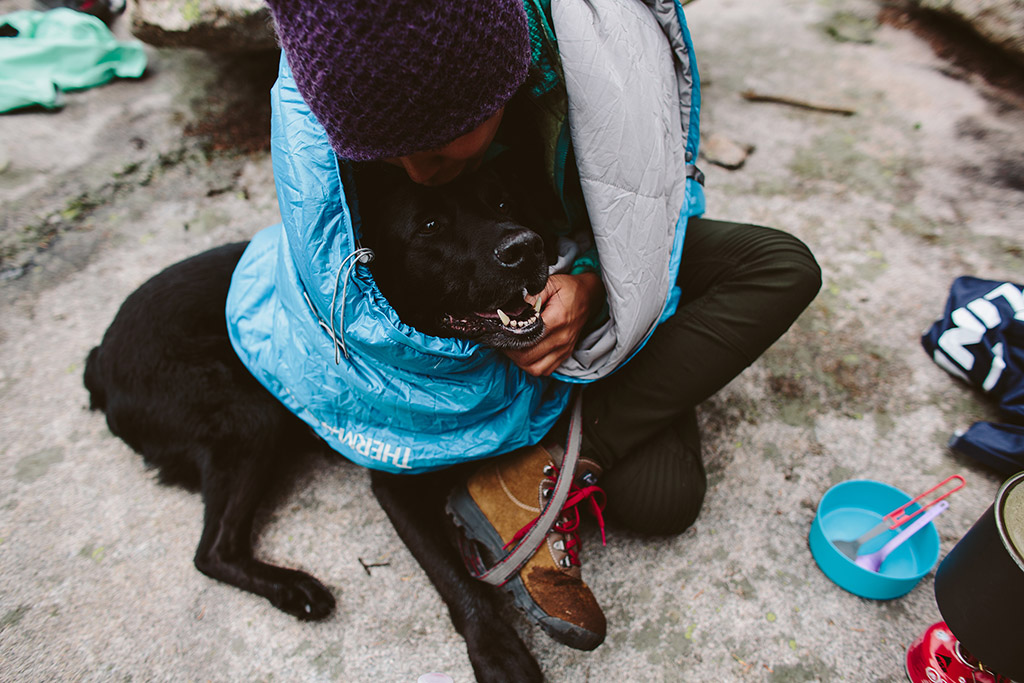 Photo by Ali Vagnini
Photo by Ali Vagnini8. Stay together
Always remember that hiking with a dog is not like hiking with a human partner. The two of you are a team and as a result must stay together and move as one. Anyone who has hiked with a dog has been forced to take breaks when they really did not want to and has camped in locations they did not plan on, based on their dog’s needs. Be flexible and do not get frustrated when these issues arise.
9. Budget for veterinarian visits
Hopefully, they are not needed, but your dog can get injured or sick. Be prepared for this and expect to take some zeros while they recuperate. Anyone who has hiked long distances with their dog has been in this situation, so be prepared for it.
Hopefully, these tips will be helpful to anyone considering taking their dog with them on a long-distance hike or even a thru-hike. It can be one of the most enjoyable and rewarding treks you have done as long as you know, in advance, what you are getting into. One final tip for thru-hikers is to make sure to apply for a completion certificate or award for your dog after completing your thru hike. Most of the associations are now granting them to dogs. Your dog deserves recognition for their accomplishment just like you do!
Related Posts:
